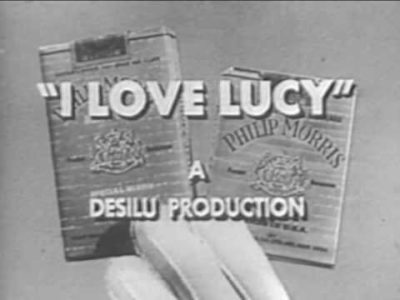A short background on where this idea came from. Product placement is the practice of displaying a brand’s product or trademark somewhere within the content being consumed. It can be subtle or big and bold.
Product placement has been around a long time. “In the 1920s-30s US commercial radio evolved into a sponsored medium when broadcasters sought to impose the cost of programming onto advertisers. [1. Branded Entertainment Reshapes Media Ecosystem, Cynthia B. Meyers, Carsey-Wolf Center].” Product placement made its way into the film industry in the 1920s [2. The Elon Journal of Undergraduate Research in Communications, Vol. 1, No. 1, Winter 2010]. One of the earliest product placements in film was the film Wings (1927) in which an ad for Hershey’s chocolate appeared [3. Wings (1927), Brandspotters]. It was such an obvious way to help bring in revenue through advertising sales that TV picked up the idea in the late 40s [4. History of Television, Michael Stephens, NYU Class].  The early products were lifestyle products like Dewar’s scotch and Admiral cigarettes. The “I Love Lucy” show had opening credits that showed “Lucy and Ricky stick figures frolicking around a box of Philip Morris cigarettes [5. Sponsor’s Products Pop Up on TV Shows, Allison Fass, Peter Kafka, ABC News].” Some TV shows had the names of their sponsors embedded within their names like the Milton Berle’s Texaco Star Theater [5. Sponsor’s Products Pop Up on TV Shows, Allison Fass, Peter Kafka, ABC News], The Colgate Comedy Hour and Kraft Television Theatre [6. Exhibit: Vintage Sponsor Spots, Television Obscurities]. But even if you wanted to buy the product you couldn’t. Purchases had to be made in store. So while some of the product placements were entertaining, they were relegated to become part of the story, something we’d notice and maybe even give thanks for their support of our favorite show.
The early products were lifestyle products like Dewar’s scotch and Admiral cigarettes. The “I Love Lucy” show had opening credits that showed “Lucy and Ricky stick figures frolicking around a box of Philip Morris cigarettes [5. Sponsor’s Products Pop Up on TV Shows, Allison Fass, Peter Kafka, ABC News].” Some TV shows had the names of their sponsors embedded within their names like the Milton Berle’s Texaco Star Theater [5. Sponsor’s Products Pop Up on TV Shows, Allison Fass, Peter Kafka, ABC News], The Colgate Comedy Hour and Kraft Television Theatre [6. Exhibit: Vintage Sponsor Spots, Television Obscurities]. But even if you wanted to buy the product you couldn’t. Purchases had to be made in store. So while some of the product placements were entertaining, they were relegated to become part of the story, something we’d notice and maybe even give thanks for their support of our favorite show.
Fast forward to 2016-2017. We’re on the verge of a revolution in mobile advertising. As mobile apps become more aware of our location, our habits, our desires, they will inevitably begin to share advertising with us that matches our desires. I’m not talking about popups. I’m talking about ads that are a part of the App we’re using (or maybe even a video stream we’re watching) tuned to appeal to our personal tastes and desires. As we engage with apps on our mobile phone, advertisers can deliver customized advertisements based on our location, browsing habits, shopping habits, or even a personal profile we’ve willingly submitted. An advertisement for McDonald’s could appear somewhere on our screen as we’re using our Twitter app while walking within 100 meters of a McDonald’s. App developers could use the advertising dollars as a way to fund their startup work. And instead of just watching the ads, we can actually click the link and be delivered the details of the offer or perhaps even place the order within a few seconds with PayPal or other payment platform that already knows who we are, has authenticated our phone, and recognizes the payment request from the advertisement we just clicked on.
It will happen. Maybe not exactly this way, but you can bet we will see something close.

